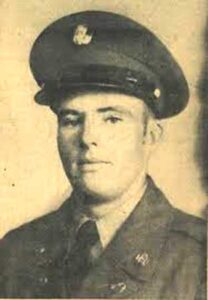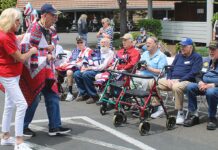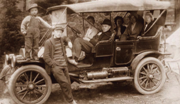After 67 years, former City Council member Ed Truax’s family finally achieved closure to the loss of his uncle, Army Corporal Edward Pool. Cpl Pool’s body had never been recovered after he was captured by Chinese forces in November, 1950 in the battle of Chosin Reservoir in Korea. Ed reported that November, 2016 produced a Thanksgiving that he will never forget. The head of the Identification Division for the US Army informed him that the remains of his mother’s twin brother, Edward Pool, had been identified and wanted to make arrangements for a burial. Ed was called because his mother is a Tualatin resident, and his uncle’s closest living relative. At a ceremony on April 5th his mother was presented with a Gold Star and the eight service medals her brother had earned. Then Cpl Pool was interned with full military honors on June 19 at Willamette National Cemetery.

Ed’s uncle was a member of Regimental Combat Team 31 (RCT-31), primarily comprised of infantry, artillery and tank units. He was in 31st Heavy Mortar Company, 31st Infantry Regiment, 7th Infantry Division, comprised of 2,500 U.S. and 700 South Korean soldiers. RCT-31 was part of a task force under the United Nations Command offensive to occupy North Korea and cut the major supply route into North Korea. The 1st Marine Division was to make the main effort while RCT-31 provided a regiment-sized force to protect the Marine’s East flank and then to attack Northward to the Yalu River, the boundary between North Korea and China. As they advanced, the rugged mountains and irregular road work separated the team units. Temperatures were down to minus 30 degrees. On November 27, expecting to advance the next morning, the Americans did not set up a tight perimeter with 360 degree security. But that night, overpowering Chinese forces, which had not been detected, made a surprise attack, overrunning and isolating many of the smaller units. Although not able to advance to the River, Pool’s unit did delay a major portion of the Chinese attackers for four days, giving the Marines more time to prepare. If the Chinese 80th and 81st Divisions had attacked the key Marine base and air-strip at Hagaru-ri before the Marines had concentrated sufficient units to defend, it could have blocked the only escape route from the Battle of Chosin Reservoir, significantly changing the course of history for that battle. The Chinese sent 120,000 soldiers, traveling at night to avoid detection, with the intension to wipe out the 30,000 allied forces on Chosen Reservoir.
By December 5, 1950, the U.S. Army evacuated approximately 1,500 RCT-31 wounded service members, the remaining soldiers had either been captured or killed in enemy territory. Because Pool could not be accounted for by his unit at the end of the battle, he was reported missing in action as of November 30, 1950.
Cpl Pool’s name appeared on a list provided by the Chinese People’s Volunteer Forces and Korean People’s Army as a prisoner of war, however no information was provided regarding his status. Following the war, one returning American prisoner reported that Pool had died when his feet froze while held captive by Chinese forces in January 1951. Based on this information, the U.S. Army declared him deceased as of Jan. 31, 1951. Between 1990 and 1994, North Korea returned 208 boxes of commingled human remains to the United States, which are now believed to contain the remains of at least 600 U.S. servicemen who fought during the war. North Korean documents included in the repatriation indicate that some of the remains were recovered from the vicinity where Pool was believed to have died. DNA analysis and circumstantial evidence were used in the identification of his remains.

![19260255_10155196775266006_2065292695468922510_n[1] Presentation of flag to Ed’s mother, with Ed and his brother John beside her.](https://tualatinlife.com/new/wp-content/uploads/2021/10/19260255_10155196775266006_2065292695468922510_n1-696x462.jpg)

















